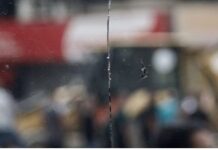Ben Reiff
+972 Magazine / July 12, 2023
Seeking to double the Jewish settler population, Israel’s far-right government is expediting infrastructural plans that were — often literally — laid decades ago.
In stage one of his “Decisive Plan” — a detailed proposal penned in 2017 for “winning and ending” the Israeli-Palestinian conflict — Bezalel Smotrich outlined a vision he called “victory through settlement.” The Israeli lawmaker, who currently serves as finance minister and as the government’s West Bank overlord through a special ministerial role created for him in the Defense Ministry, explained in the essay that his plan would require “the encouragement of tens and hundreds of thousands of residents to come live in Judea and Samaria,” using the Biblical name for the West Bank.
“Nothing would have a greater and deeper effect on the consciousness of the Arabs of Judea and Samaria … demonstrating the impossibility of establishing another Arab state west of the [River] Jordan,” he wrote. “Facts on the ground deflate aspirations and defeat ambitions.”
Smotrich has bided his time, but now — thanks to an agreement with Defense Minister Yoav Gallant in February that expanded his control over several aspects of the settlement planning process — he appears eager to put his “Decisive Plan” into action. A Haaretz report in May revealed that the Religious Zionist Party (RZP) head has instructed representatives in various government ministries to immediately begin preparations for doubling the settler population in the West Bank, which would take the total from the current 500,000 to 1 million.
Reports of the plan, whose figures do not include the nearly 250,000 Israelis living in occupied East Jerusalem, sparked condemnation from the White House; in response, Israeli Prime Minister Benjamin Netanyahu affirmed to U.S. officials that the proposal does not reflect government policy. Yet the vast infrastructural developments underway in the West Bank, in addition to the spike in the number of housing units advanced so far this year in the territory, mean that the trajectory is already set for a significant jump in the settler population over the coming years. And while this government is certainly seeking to speed things up, the foundations for much of what we see today were — often literally — laid decades ago.
‘The roads are the key’
The current far-right government’s intentions for the West Bank were clear from the outset. Its founding guidelines asserted the Jewish people’s “exclusive and indisputable right to all parts of the Land of Israel,” i.e. all the land between the River Jordan and the Mediterranean Sea, which around 7 million Israeli Jews share with a roughly equal number of Palestinians. A position paper by the Adalah legal center argued that this stipulation “goes further than the principles enshrined in the 2018 Jewish National State Law” — a quasi-constitutional anchor which, the paper says, already has “clear characteristics of apartheid” — and will serve “to deepen Jewish supremacy and racial segregation as the underlying principles of the Israeli regime.”
The coalition agreement between the RZP and Netanyahu’s Likud, meanwhile, pledged that the prime minister will “work toward the formulation and promotion of a policy whereby sovereignty is applied to Judea and Samaria.” The deal between Gallant and Smotrich, which handed the latter governance powers that for decades were held by the military, served as a step toward fulfilling that promise, with human rights lawyers and experts recently describing it as an act of de jure annexation.
In terms of settlement expansion, the government is not waiting around. Since the start of 2023, it has advanced the planning of over 12,000 new housing units in settlements across the West Bank, more than 7,000 of which have been approved for construction — figures that are on track to dwarf their equivalents from recent years, and which do not include the 16,000 units advanced in East Jerusalem over the same period.
The cabinet also resolved in June to shorten the process by which settlement construction is authorized, while under Smotrich’s control the Civil Administration — the bureaucratic arm of the occupation — has virtually ceased to dismantle illegal structures built by settlers; on the other hand, demolitions of Palestinian structures in the West Bank during the same period have vastly increased.
Additionally, the cabinet in February approved the retroactive legalization of 10 settler outposts built without official authorization, enabling their significant expansion. And this is only the tip of the iceberg: plans are underway to legalize a further 70 outposts on the basis that they constitute “neighborhoods” of existing settlements rather than separate communities; such a move on these terms could go ahead without needing cabinet approval. These steps have drawn verbal condemnation from the Biden administration, but nothing further.
However, according to Hagit Ofran, head of the Settlement Watch project at the Israeli anti-occupation NGO Peace Now, to focus only on the settlements themselves is to miss the point. “In order to accumulate any expansion [of the settler population], they first of all need to upgrade the roads — and that’s what they’re doing now,” she tells +972, stressing that “the roads are the key.”
Indeed, as well as significant upgrades to water, electricity, and telecommunications infrastructure to cater to hundreds of thousands more settlers, construction is underway on several new roads that will both vastly reduce the traffic jams that have characterized settler thoroughfares in recent years, and divert traffic away from Palestinian towns. In so doing, Israel will be able to incentivize more of its citizens to move to the West Bank, showing that commutes from settlements to cities inside the Green Line like Jerusalem and Tel Aviv will be much quicker and, from the settlers’ perspective, safer.
Ofran highlights the example of the “Lieberman Road” — which takes its name from former Transportation Minister Avigdor Liberman, under whose tenure its construction began two decades ago — to illustrate the impact that new roads can have on settlement growth.
“In settlements east of Bethlehem like Tekoa and Nokdim, you used to have to circle Bethlehem from the south to come from Jerusalem, which took 40 minutes and went through Palestinian villages,” she explains. “As soon as they paved the Liberman Road, it became a 15-minute drive. The opening of the road in 2008 doubled the number of settlers in those settlements in less than 10 years.”
This is the blueprint now being used all across the West Bank. Following the construction of the Nabi Elias bypass near the Palestinian city of Qalqilya in 2017, Israel has begun work on Al-Arroub bypass in the south and the Huwara bypass in the north. A seizure order has already been issued for another bypass road that would divert settler traffic away from the Palestinian town of Al-Funduq en route to the Kedumim settlement — which Smotrich himself calls home. Meanwhile, work is underway on doubling the width of the “Tunnels Road” (Route 60) to ease the commute between Jerusalem and the Hebron area settlements, especially Kiryat Arba.
While Israel presents these roads as projects that will benefit Palestinians in the region as well as settlers, the reality is very different. According to Dror Etkes, founder of the NGO Kerem Navot which closely monitors Israel’s infrastructural developments in the West Bank, construction of these roads leads to various adverse consequences for Palestinians, including the loss of agricultural land and the further atomization of Palestinian localities from each other. “The roads are very important physical barriers in terms of the Bantustanization of the West Bank,” he explains, adding: “Israel has specialized in using roads to cut contiguity between one community and the next.”
These roads are technically open to Palestinian traffic, but their routes are designed specifically for the journeys taken by Israeli settlers — and, as Etkes stresses, “if Israel wants to close a road to Palestinians, it can do it in a second.” He points to the example of Route 443, a major east-west artery bisecting the West Bank that was upgraded in the 1990s: “It was originally paved for Palestinians to use, but during the Second Intifada, Israel found ways to close the road for Palestinians and shove Palestinian traffic into enclaves, basically keeping 443 as an Israeli-only road.”
‘Same ideology, same means’
Smotrich’s goal of 1 million Jewish settlers is by no means the first proposal of its kind. As early as 1978, the settler movement Gush Emunim submitted a “masterplan” for reaching 750,000 Jewish settlers in the West Bank (not including East Jerusalem) in the span of 25 years, which was approved by Menachem Begin’s government. Three years later, Matityahu Drobles, then-head of the World Zionist Organization’s settlement division, laid out a proposal for 1 million West Bank settlers within 30 years.
While neither target was hit, Yehuda Shaul, co-director of the Israeli NGO Ofek and a veteran activist against the occupation, warns against fixating on the feasibility of the numerical end goal proposed in plans like this. “If you ask me if it’s realistic that by 2050 we’re going to have another 500,000Jewish settlers in the West Bank, I’d say probably not,” he says. “But in the past, when they’ve said 1 million in 30 years, even though they haven’t reached it, they’ve reached half a million.”
In any case, he stresses, “the story is not the exact number they can reach, the story is what this project does on a day-to-day basis: the dispossession and displacement of Palestinians, the suffering on the ground, the friction and conflict that it feeds and perpetuates. The level of investment [the current government] is putting in, and the kind of structural changes they’re doing, is going to make the incredibly inhumane reality we already have in the occupied territories way worse — and they’re doing it at unprecedented speed.”
Touching on several of these developments — including the amending of the Disengagement Law, with which the government is enabling settlers to return to settlements evacuated 18 years ago as part of Israel’s withdrawal from Gaza — Shaul warns: “With these kinds of extremists, if you give them victories, political imagination travels very quick and very far.”
The settler movement, he says, which now dictates government policy through figures like Smotrich, is “a very determined ideological group that has a very clear vision and will use every tool at its disposal to follow through with their agenda and advance it. So 500,000 [more Jewish settlers in the West Bank] sounds crazy, but 250,000 they’ll do.”
In fact, the designs for such an increase were drawn up long before the current government came to power. In 2015, Peace Now obtained data from the Housing Ministry revealing that, since 2012, plans were being advanced for more than 55,000 additional housing units for Israeli citizens in the West Bank, which included the establishment of two new settlements. Ofran estimates that such expansion — some of which has by now been approved, while the majority remains in the planning stages or blocked by international pressure — would pave the way for an increase of 250,000 in the settler population.
The direct consequences of this are not difficult to imagine: the certain demolition of Palestinian villages like Khan al-Ahmar, whose presence is a thorn in Israel’s Jewish-only construction plans; the forcible expulsion of more rural communities under spurious pretenses, like those currently at risk in Masafer Yatta; and the further intensification of state-backed settler violence against those who dare to defy these forces by remaining on their land, such as the residents of the now depopulated village of Ein Samia. It’s a colonial playbook older than the occupation itself, whose implementation extends across Israel’s land regime and continues to drive the displacement of Palestinians between the river and the sea.
Indeed, in addition to the massive expansion underway in the West Bank, the government is advancing the construction of several new Jewish towns in the Naqab/Negev in the south and the Galilee in the north — areas inside Israel’s pre-1967 borders that have long been the focus of official Judaization efforts due to their large Palestinian populations, even though they are citizens. Legislation is also being brought forward in the Knesset to expand the jurisdiction of “admissions committees” in order to ensure segregation by law on both sides of the Green Line.
While the state usually spearheads the construction process inside its official borders, it has also at times allowed small groups to take the lead, as is more commonly seen with settler outposts in the West Bank. This is the dynamic currently playing out in Ramat Arbel, a Galilee outpost that recently received cabinet authorization.
“An ideologically motivated group of people goes out and puts facts on the ground without permission to build,” explains Suhad Bishara, Adalah’s legal director and head of the center’s land and planning unit. “Then when their interests align with the government’s in terms of Judaization, very handy budgets come along.”
Bishara emphasizes that these agendas on either side of the Green Line must be seen as intertwined. “It’s the same concept, the same ideology, and the same means,” she says. “The guiding principle is Jewish territorial and spatial domination, through expanding the tools of Judaization across the territories under Israel’s control.”
Returning to Smotrich’s plan, Etkes thinks there’s a reason the lawmaker is floating the figure of 1 million in meetings with ministry officials: “It’s almost a symbolic final nail in the coffin — their final insurance policy that the settlements are never going to be dismantled.” But for Etkes, we’re already far beyond the point of no return, and the conversation is rightly shifting to new terrain. “Everybody understands that there won’t be a Palestinian state and the settlements won’t be evicted — that story is over,” he says. “The question is not about dismantling anymore, but about what kind of political regime will prevail here.”
Ben Reiff is an editor at +972 Magazine, and newsletter editor at Vashti Media












